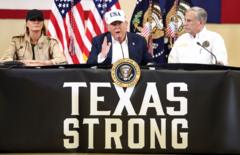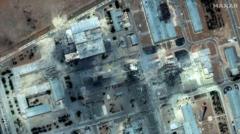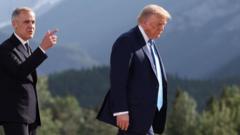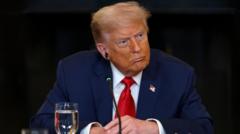President Trump's administration has extended the deadline for tariff implementation, drawing criticism for failing to secure trade agreements as tensions rise internationally.
Trump Pauses Tariffs Amidst Global Trade Tensions
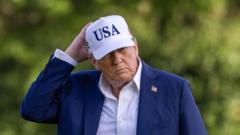
Trump Pauses Tariffs Amidst Global Trade Tensions
The U.S. delays tariff implementation as countries respond assertively, revealing potential failures in deal-making.
President Donald Trump's administration initially declared an ambitious target of "90 deals in 90 days," but reality dictates a pause in the rollout of tariffs, with the latest deadline pushed from Wednesday to August 1. This delay hints at deeper negotiations and reflects the challenges faced in striking successful trade agreements. Treasury Secretary Scott Bessent has focused efforts on 18 nations responsible for the majority of the U.S. trade deficit, yet interest remains low as these nations push back against U.S. demands.
Communications sent to trading partners echo an earlier, unsuccessful approach taken by the Administration, as tariffs remain based on what was previously revealed in April. Despite earlier market apprehensions regarding potential turmoil, current financial sentiment shows a belief in the likely continuation of delays. However, this could embolden other countries to take a hard stance too.
Countries like Japan and South Korea have reacted strongly against U.S. tactics, with Japan's finance minister hinting at using the nation’s substantial holdings of U.S. debt as leverage. The global market dynamics have shifted, as U.S. tariffs have led to a weakened dollar and fluctuating trade figures. While U.S. revenue from tariffs has surged, the country is increasingly isolated, as evidenced by growing trade agreements among other nations.
The active tariff rate imposed by the U.S. is now roughly at 15%, a stark increase from historical figures between 2% and 4%. Market reactions remain stable for now, but the ongoing situation could change as countries respond to the shifting landscape of global trade. As Trump’s second term unfolds, investors and political analysts are left to navigate the uncertainty ahead.


